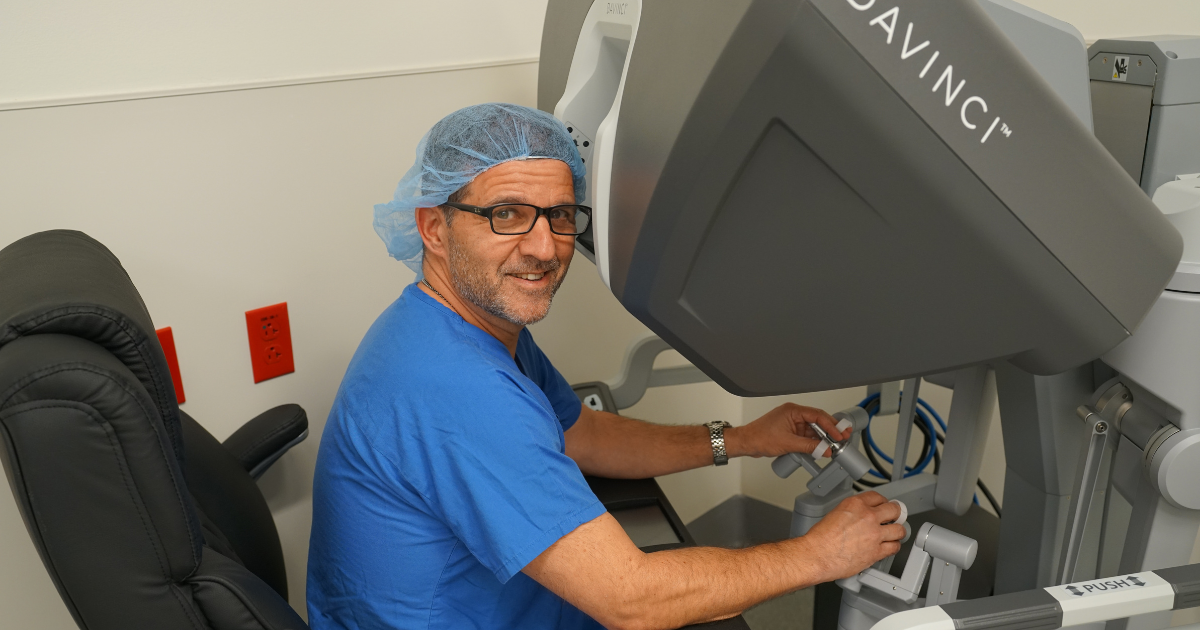Robotic-Assisted Gynecological Surgery Provides Next-Level Care
- Category: System Happenings, Women & Children
- Posted On:

Warren Memorial Hospital is now offering robotic-assisted gynecological surgery to enhance women’s care.
Julian E. Martinez, MD, a board-certified physician in obstetrics and gynecology, performs an array of gynecological surgeries using the hospital’s da Vinci Xi robotic system.
“The technology has improved dramatically,” he says. “It has become more simplified, safer and easier to deploy. Robotic gynecological surgeries are becoming the standard of care.”
Robotic gynecological surgery, like traditional laparoscopic surgery, involves working through small incisions in the patient’s pelvic and abdominal regions. But compared to traditional laparoscopic gynecologic surgeries, the robotic option has two aspects that “change everything,” according to Dr. Martinez.
“When doing laparoscopy, we’re putting rigid instruments inside the patient’s abdomen and pelvis while looking at a two-dimensional screen next to us,” he explains. “With robotic surgery, once I have everything installed on the patient’s pelvic area, I sit at a console next to the patient and have my eyes on a camera that gives me a 3D view inside the patient.” This view allows for a more detailed assessment of the anatomy and more accurate depth of field.
“The other part of it, which is incredible,” he says, “is that whatever I do with my hands while sitting at the console is duplicated inside the patient. I can accurately guide the instruments to the surgical target.” He compares it to using virtual reality goggles.
Patients who undergo robotic gynecological surgery and other robotic surgeries often go home the same day. There is less tissue strain on incisions, leading to less tissue trauma, blood loss and pain. Because of the high-definition, three-dimensional view of the patient’s anatomy, the surgical area can be more efficiently targeted, leading to less disturbance to the surrounding anatomy.
Additionally, the accuracy rendered by the camera and the steady articulation of the robotic tools generally translates to shorter surgical time, which is a win for patients, families and doctors alike.
Common Robotic-Treated Gynecological Conditions and Surgeries
- Endometriosis, a condition in which abnormal tissue in the pelvis causes pain
- Fallopian tube removal (salpingectomy)
- Hysterectomy, a surgical procedure to remove the uterus and, in some cases, other reproductive organs like the cervix and ovaries
- Myomectomy to remove uterine fibroids
Dr. Martinez sees patients at Shenandoah Memorial Hospital’s Multispecialty Clinic. Should an individual need robotic gynecological care, they will receive that at Warren Memorial Hospital.
To make an appointment, please call Dr. Martinez’s office at Valley Health Shenandoah Memorial Hospital Multispecialty Clinic at 540-459-1270.


